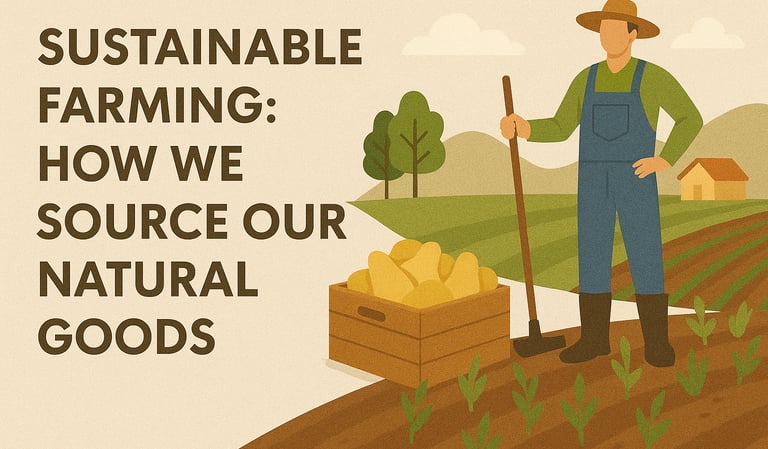Understanding Different Types of Millets
Millets are ancient superfoods making a strong comeback in modern diets! Naturally gluten-free, rich in fiber, and loaded with essential nutrients, they’re a smart choice for healthy eating. In this guide, explore different types of millets, their health benefits, and tasty ways to include them in your meals. 🌱
MILLETS
6/2/20252 min read


The world of millets is incredibly diverse, with each type offering unique nutritional benefits and culinary uses. Let's explore some of the most popular millets:
🌾 Complete Guide to Millets: Benefits, Uses & Nutrition
Millets are ancient superfoods making a strong comeback in modern diets! Naturally gluten-free, rich in fiber, and loaded with essential nutrients, they’re a smart choice for healthy eating. In this guide, explore different types of millets, their health benefits, and tasty ways to include them in your meals. 🌱
🌿 Foxtail Millet (Kangni/Navane)
A heart-healthy rice alternative that supports immunity and blood sugar levels.
Appearance: Small, light yellow grains
Benefits: High in fiber, iron & calcium • regulates sugar • boosts immunity
Uses: Porridge • pulao • upma • desserts
🔴 Finger Millet (Ragi/Nachni)
The calcium king of millets, ideal for kids and bone health.
Appearance: Tiny, reddish-brown grains
Benefits: Rich in calcium, iron & amino acids • supports bone health & growth
Uses: Rotis • dosas • porridge • ragi malt • baking
🌕 Pearl Millet (Bajra/Sajjalu)
A warming grain, perfect for winters and rich in nutrients.
Appearance: Round, greyish-yellow grains
Benefits: High in iron, fiber & magnesium • improves digestion • provides warmth
Uses: Rotis • khichdi • porridge • bhakri
⚪ Little Millet (Kutki/Samai)
A tiny, digestible millet great as a daily rice substitute.
Appearance: Very small, whitish grains
Benefits: Packed with B-vitamins, calcium & zinc • easy on digestion
Uses: Upma • pongal • kheer • rice dishes
🟤 Kodo Millet (Kodra/Varagu)
A detoxifying millet for sugar and cholesterol control.
Appearance: Small, oval, brown grains
Benefits: High in fiber & antioxidants • regulates sugar & cholesterol
Uses: Dosa • idli • porridge • millet rice
🌾 Barnyard Millet (Sanwa/Jhangora)
A light and wholesome grain, ideal for fasting and detox.
Appearance: Pale yellowish grains
Benefits: Low in calories • rich in iron & fiber • easily digestible
Uses: Vrat recipes • upma • pulao • millet tikkis
🟠 Proso Millet (Chena/Barri)
A brain-boosting millet rich in protein and great for skin.
Appearance: Small, round, yellow grains
Benefits: Supports brain & nerve health • high in protein & lecithin • promotes glowing skin
Uses: Salads • porridge • khichdi • stuffing
🟢 Sorghum (Jowar)
India’s ancient grain – gluten-free and power-packed.
Appearance: Pale yellow or white seeds
Benefits: Excellent for heart & bones • rich in antioxidants • stabilizes blood sugar
Uses: Jowar rotis • pancakes • porridge • snacks
🟤 Browntop Millet (Korale/Andu Korralu)
A rare millet with powerful gut-cleansing properties.
Appearance: Tiny brown seeds
Benefits: Detoxifies the body • gluten-free • high in fiber & iron
Uses: Idli • dosa • upma • millet rice
🌱 Teff (Eragrostis tef)
Ethiopia’s supergrain, packed with calcium, iron, and energy.
Appearance: Tiny ivory or dark brown grains
Benefits: Rich in calcium & iron • improves digestion • reduces inflammation
Uses: Injera flatbread • porridge • flour for baking
✅ Why Include Millets in Your Diet?
Millets aren’t just healthy — they’re sustainable and versatile.
🌿 Gluten-Free: Perfect for gluten-sensitive individuals
💪 High in Fiber: Aids digestion & weight management
🍽️ Versatile: Use as rice, flour, or porridge
❤️ Heart-Friendly: Supports cholesterol & sugar control
🌱 Eco-Friendly: Requires less water to grow, making it better for the planet
Exploring these different millets can add variety and immense nutritional value to your diet.
Millets, Cooking Oils & Essentials Straight from Odisha’s Heart
connectsustore@gmail.com
+91-9439490001
© 2025 SuStore. All rights reserved | This website is designed, developed, and maintained by SuStore | Unauthorised use, reproduction, or distribution of any content is prohibited | Contact for website business
Unit-4, Bhubaneswar, Odisha-751001
Visit Us


